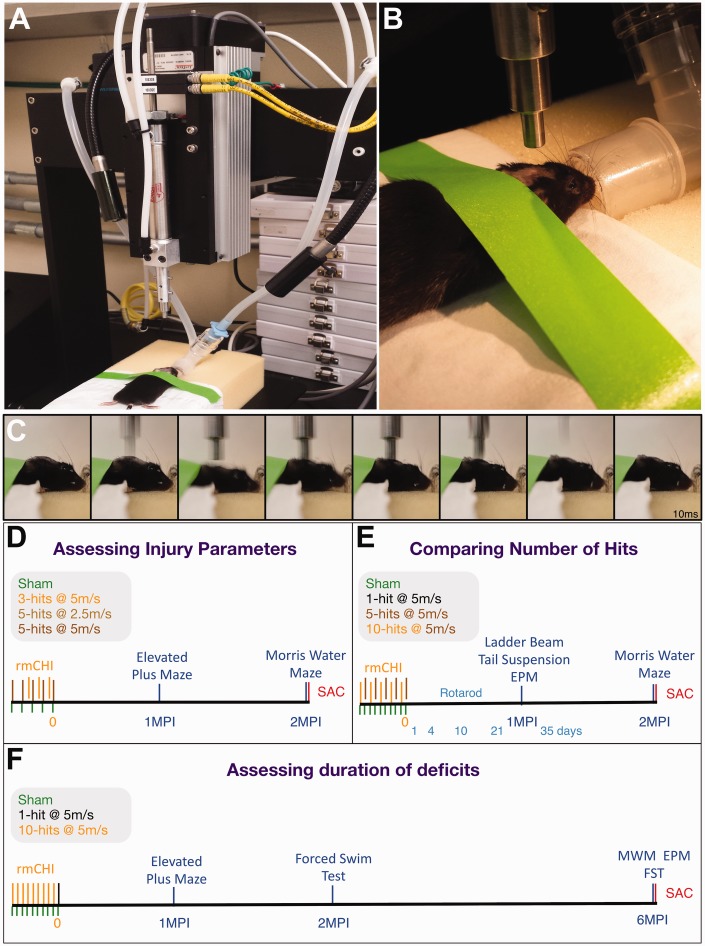Figure 1.
Model of repeated mild closed head injury (rmCHI) used in long-term behavioral testing of mice. Following 4 min of isoflurane anesthesia exposure to shave and prepare the mouse head for impacts, mice are positioned atop Marmarou foam placed in the TBI-0310-controlled cortical impactor device (a). Lab tape is lightly applied to pin the ears back and flatten the head onto the foam (b) while positioning the piston directly above the dorsal aspect of the sagittal suture. After 7 min of initial knockdown in anesthesia, an injury is delivered to the mouse head. Stills from a time lapse video (10 frames per second) show the mouse receiving an impact, followed by depression and rotation into the foam, followed by a quick rebound toward the piston (c). Three main experiments were performed to (d) assess baseline injury parameters, comparing hits at a velocity of 2.5 m/s to 5 m/s and a 3-hit versus 5-hit paradigm; (e) compare the number of hits in a 1-, 5- and 10-hit paradigm; and (f) compare the behavioral and pathological deficits at 6 MPI with deficits observed at 2 MPI.
TBI = traumatic brain injury; MPI = months postinjury; EPM = elevated plus maze; FST = forced swim test; MWM = Morris water maze.

